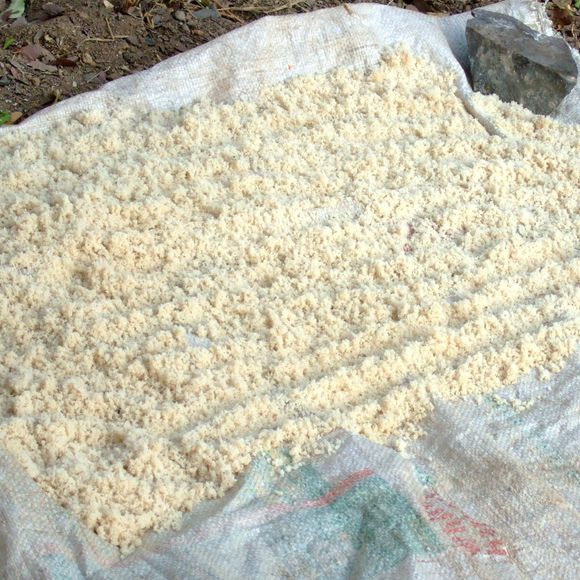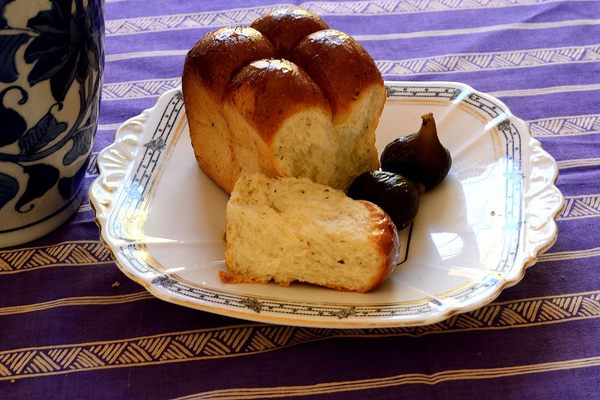Ingredients & Condiments
Baleni Salt
A sacred tree, a secret language, and the labor of generations of women keep an ancient tradition of salt harvesting alive.
Salt extraction from the Baleni, a geothermal spring in South Africa, is a tradition that dates back over 2,000 years. The Baleni, which lies on the southern bank of the Klein Letaba River, is located on the South African Lowveld, a low-elevation subtropical region. The geothermal spring has formed an oval swamp so saline and mineral-rich that salt crusts float along its edges. It is this salt that local women have been collecting and harvesting for millennia.
Harvest begins with an offering to the sacred motswiri, a leadwood tree on the salt site. Usually some maize and a coin is left in a clay pot at the foot of the tree, while a female elder chants an invocation. The women, who will stoop for hours to harvest this precious salt, beseech the tree for permission to enter and partake of the mineral-rich salt deposit. Harvesting takes place from May to September, before the beginning of the wet summer season, when the water levels rise far too much to allow for salt extraction.
Once the salt-rich soil has been collected from the Baleni swamp, it needs to be filtered through a handmade filtration system, called xinjhava. The filtration system is a crater-like basin constructed with soil from the river bank and placed on a raised wooden frame made with the branches and leaves of the mopane tree. The salty deposit from the swamp is mixed with clean sand and placed in the filter. It is then filled to the brim with water, which funnels out of the filter to a bucket waiting underneath, filtering out large particles such as stone chips, and leaving only an earthy, intense, saline solution. The process is repeated several times.
The resulting brine is then boiled over metal pans on an open fire, under constant supervision because even the slightest bit of over-boiling can burn the salt. When the water boils out, what’s left is the “white gold”: crystalline salt with the slightest kiss of yellow, resembling the white sands of a pristine beach. The harvesters then set the salt to dry in the sun, after which it is packed and ready for sale.
The women harvesters live beside the Baleni spring during harvest time, making the salt that has become a commercial favorite. Belonging to the Tsonga tribe, they speak in a coded language of metaphors, out of respect for the sacred space they inhabit, beside a bubbling spring of mineral water that holds both religious and economic significance for them. They believe it is inauspicious to refer to elements in nature by their actual name, so inventive names are coined for everyday things: a cloud becomes a blanket, reeds are spears, a snake is a stick, and so on.
Locals and practitioners of alternative medicine hail Baleni salt for its curative properties, and because it is naturally processed and organic. Baleni is the only natural salt harvesting site in South Africa, where timeless traditions endure, untouched by mechanization, blessed by the spring, the river, the sacred tree, and the spirit of the ancestors.
Where to Try It
-
African Ivory Route: Baleni Cultural Camp Website
Bollanoto Tourism Centre, Hendrik van Eck Street , Phalaborwa, South AfricaAfrican Ivory Route is a local ecotourism organization that arranges accommodations and tours to the Baleni salt harvesting site.
Written By
 Rohini Chaki
Rohini Chaki
Sources
- www.tfpdfoundation.org/blog/mining-baleni-salt-on-the-african-ivory-route
- www.africanivoryroute.co.za/wp-content/uploads/2014/07/Sacred-Soutini-by-Sue-Derwent-in-Country-Life.pdf
- africageographic.com/blog/grandmothers-harvest-baleni-salt/
- www.baleni.co.za/
- repository.up.ac.za/bitstream/handle/2263/40530/Antonites_Archeological_2013.pdf?sequence=1

















